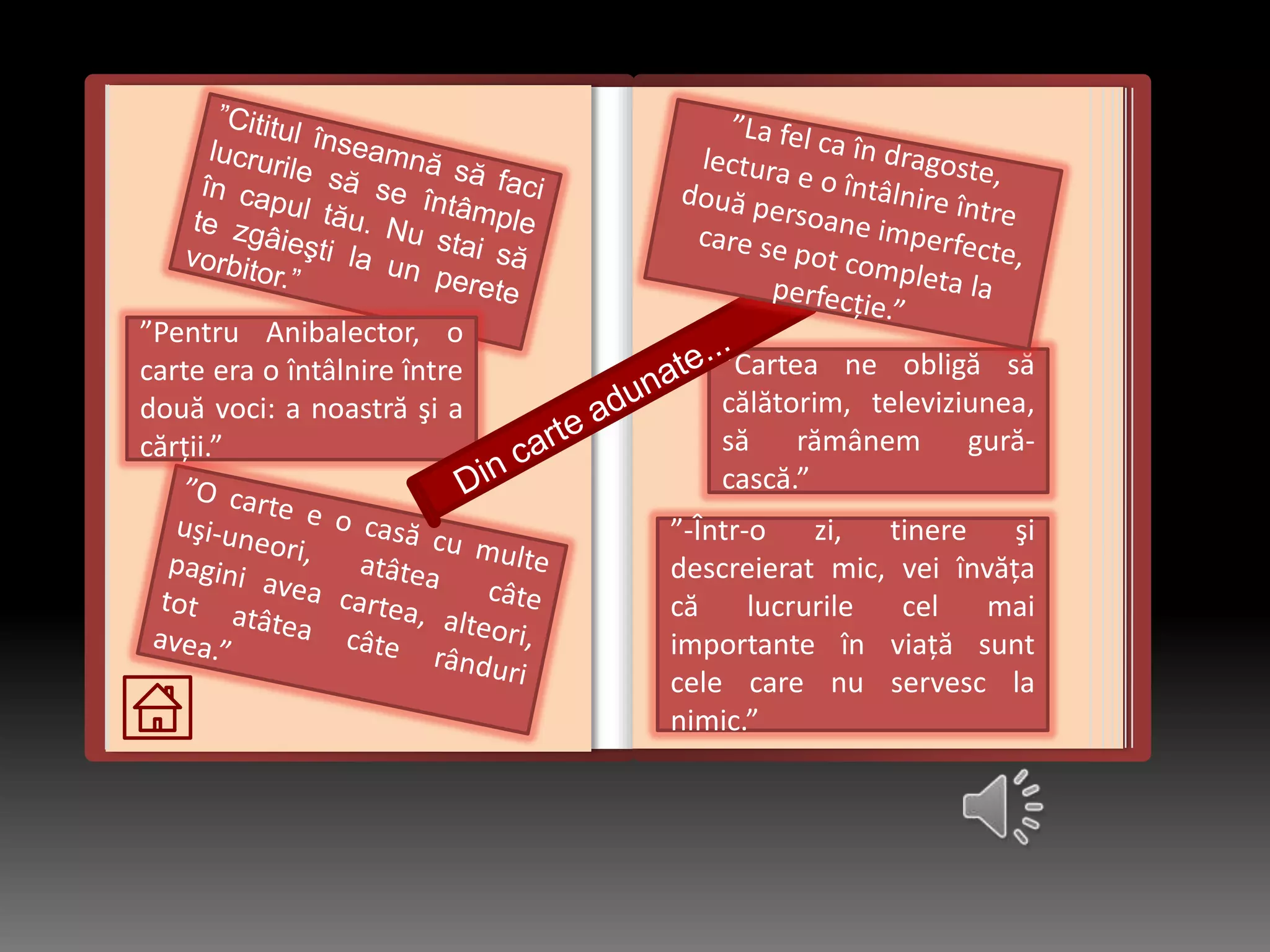Romanul "Cititorul din peșteră" de Rui Zink explorează tema lecturii prin povestea unui adolescent care, după divorțul părinților săi, se alătură unei bande și întâlnește un personaj fantastic numit Anibalector. Narațiunea subiectivă și călătoria inițiatică a protagonistului subliniază importanța lecturii și rolul cărții în dezvoltarea umană. Cartea, publicată în 2006, invită cititorii să reflecteze asupra valorii lecturii într-o societate contemporană în criză.

























